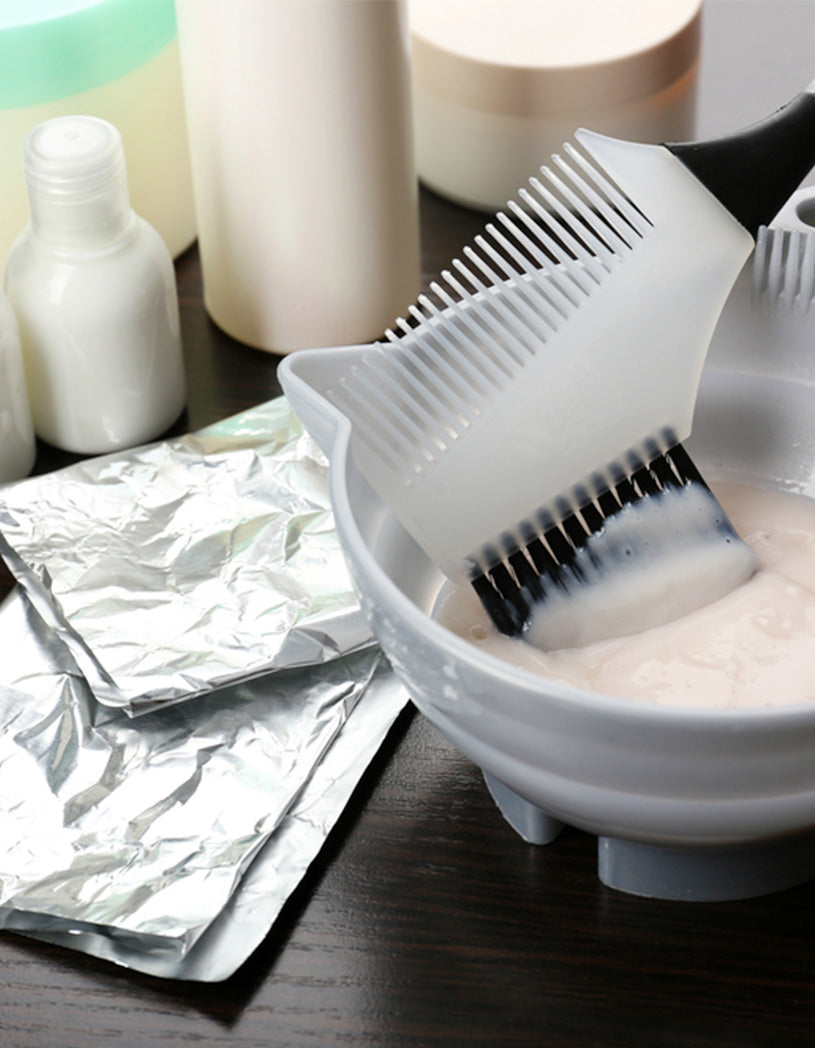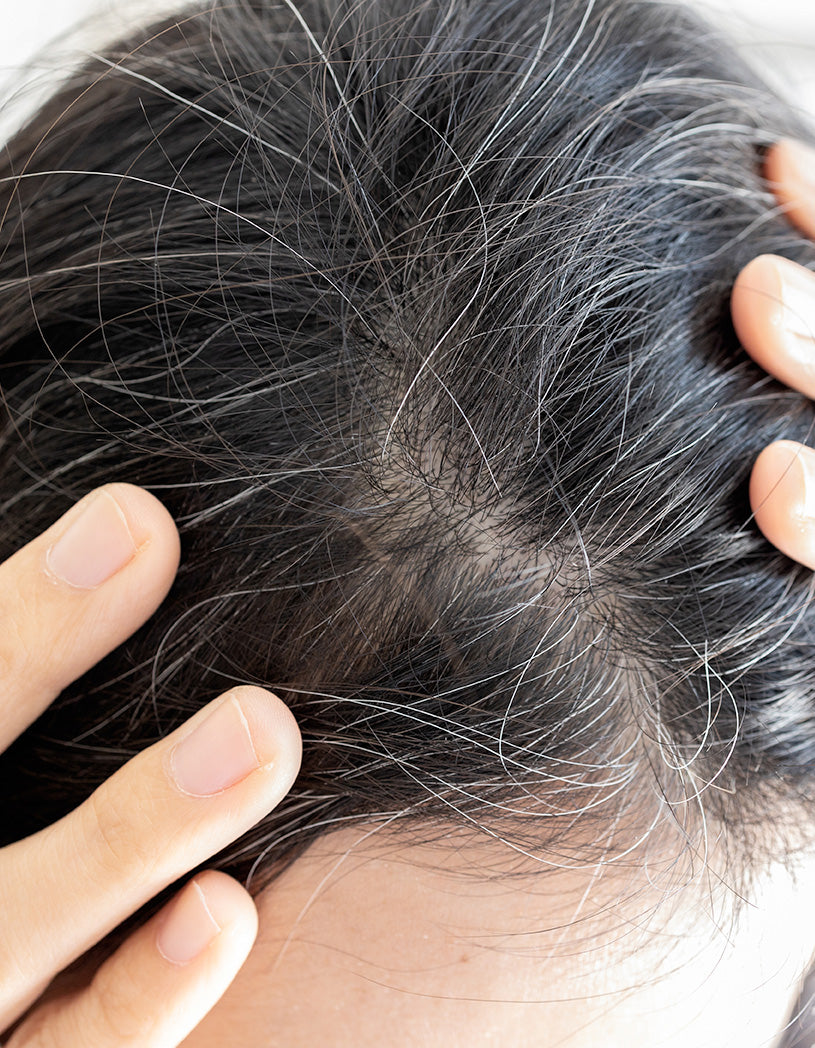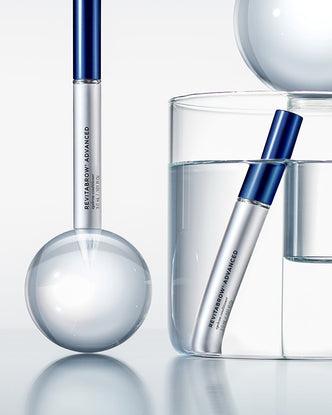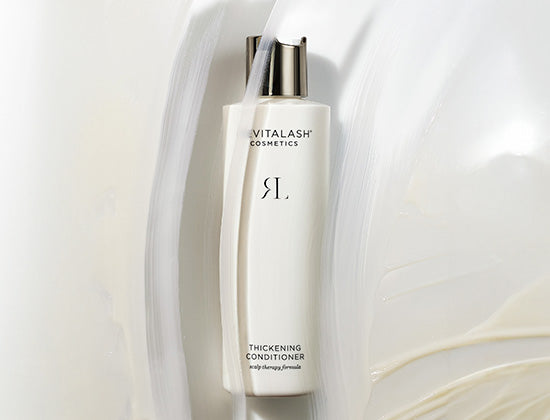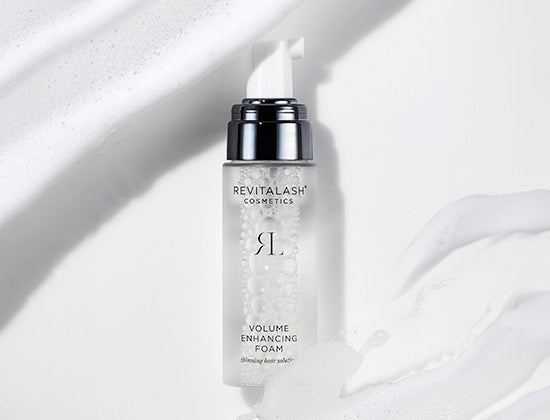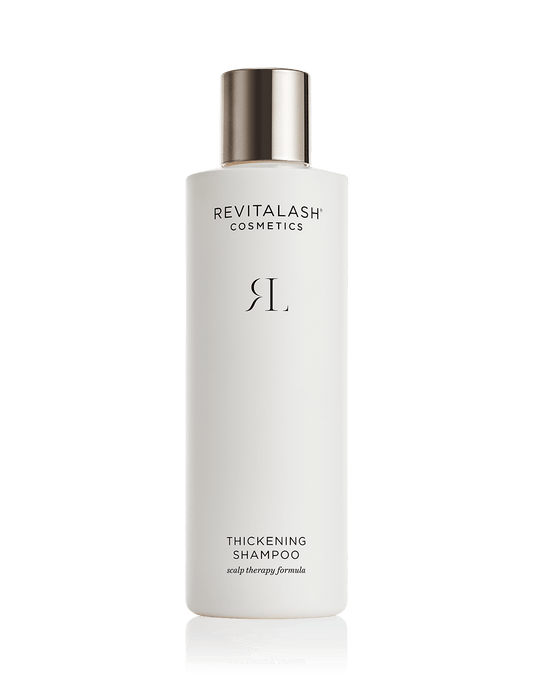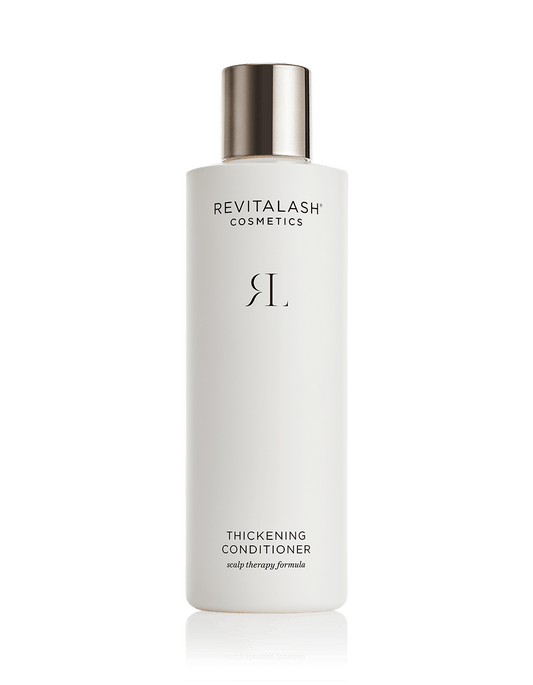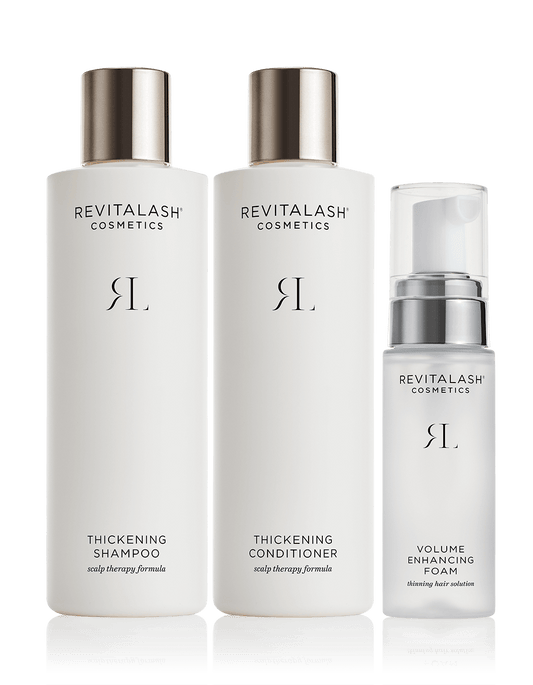What are the common aging hair changes?
Before we jump into how to treat aging hair changes, let’s touch on what those changes actually are.
There are a number of ways in which hair changes as we get older, including:
Hair texture changes
One of the ways that hair may change as we get older is the actual texture of the hair.
The more you age, the more your hair is exposed to factors that could cause damage. These can include UV rays, chemicals from hair products and/or treatments, or weather/climate-related factors (like wind, cold, humidity, and dryness). The more you’re exposed to those things, the more likely you are to suffer damage that could change the texture of your hair.
Not only that, but sebaceous glands which produce oil in the scalp become less active over time. This change can make hair drier, more brittle, and less shiny. It also makes hair more prone to damage. This is why hair breakage and aging often go hand in hand.
Hair density and diameter changes
Another way hair changes as we age is by decreasing in density.
Shedding hair is totally normal; our bodies are constantly shedding old hair and growing new hair. In fact, according to the American Academy of Dermatology Association (AADA), it’s normal to lose anywhere between 50 and 100 hairs per day.
But as we age, that process can change. Our bodies will continue shedding hair. However, as our scalps age, some hair follicles may stop growing new hair. This can lead to less hair density. (For example, you might find that your part is wider than it used to be—or your hairline might recede a bit.)
In addition to reduced density, follicles may gradually shrink, resulting in finer strands of hair. This change in hair diameter can make hair more prone to damage. Visually, it can also appear as if there is less hair, especially when hair density decreases simultaneously. For example, if you braid your hair, you might notice that it looks and feels less full than you’re used to.
This one-two punch is essentially what we know as hair thinning—and hair thinning with age begins sooner than you’d think. Research shows that hair density is highest in the late 20s. After that, it begins to decline. Hair diameter increases until age 45, then it also starts to decline.

